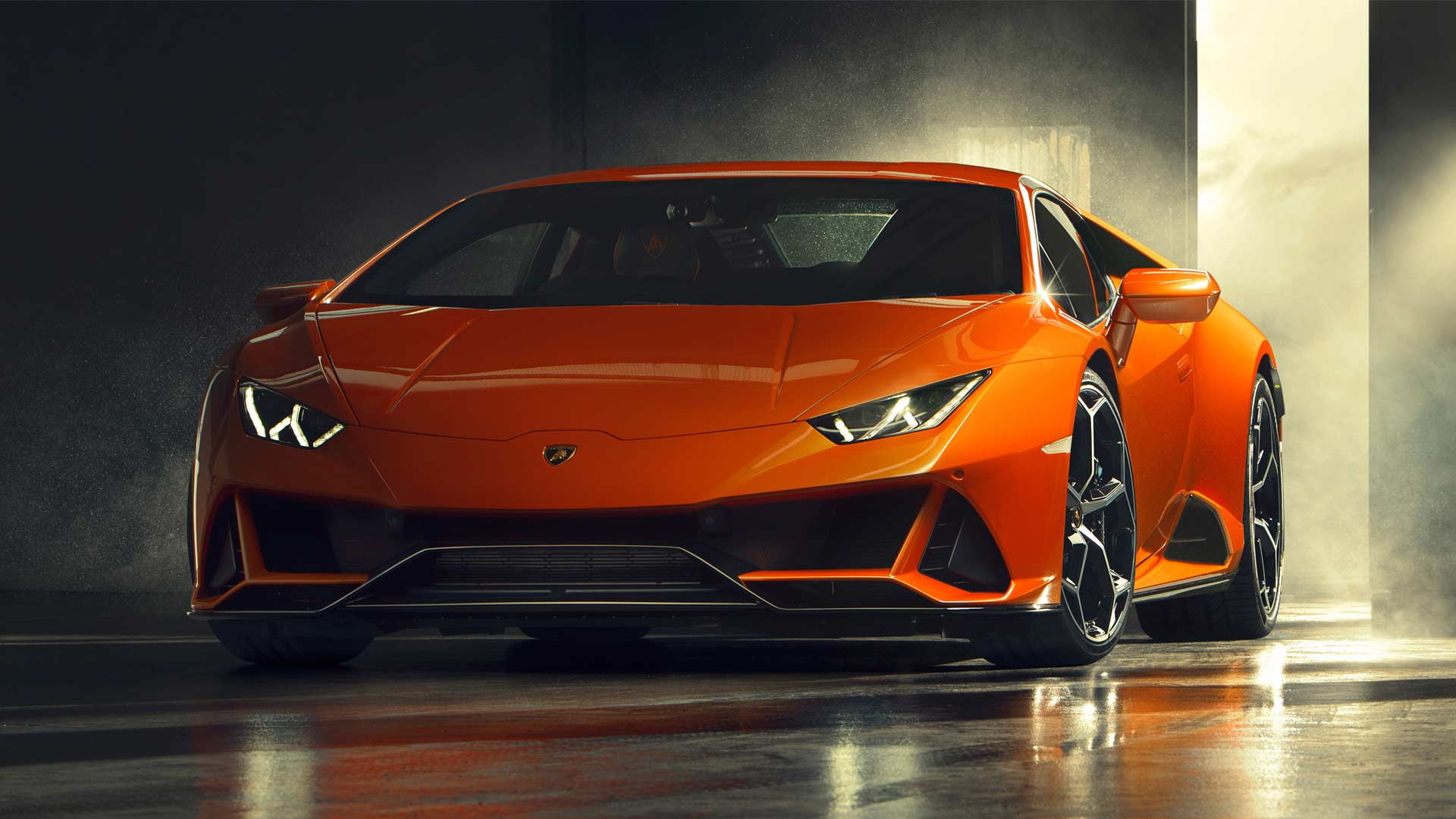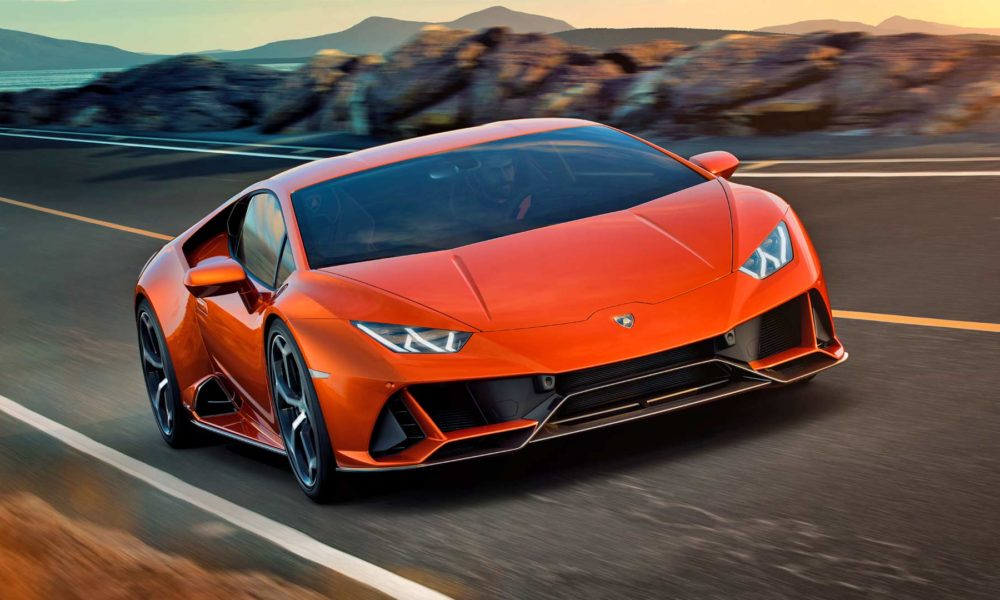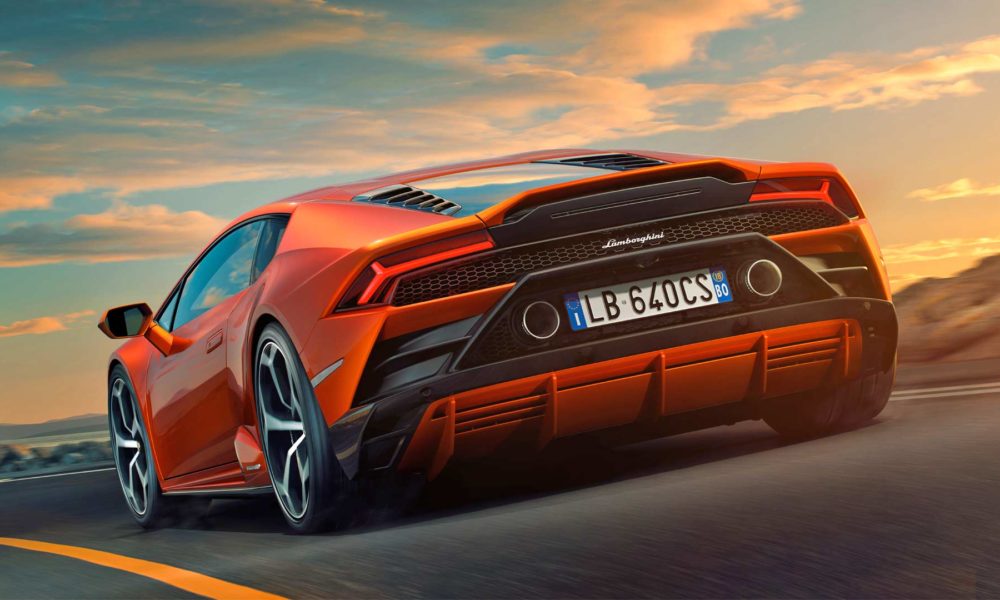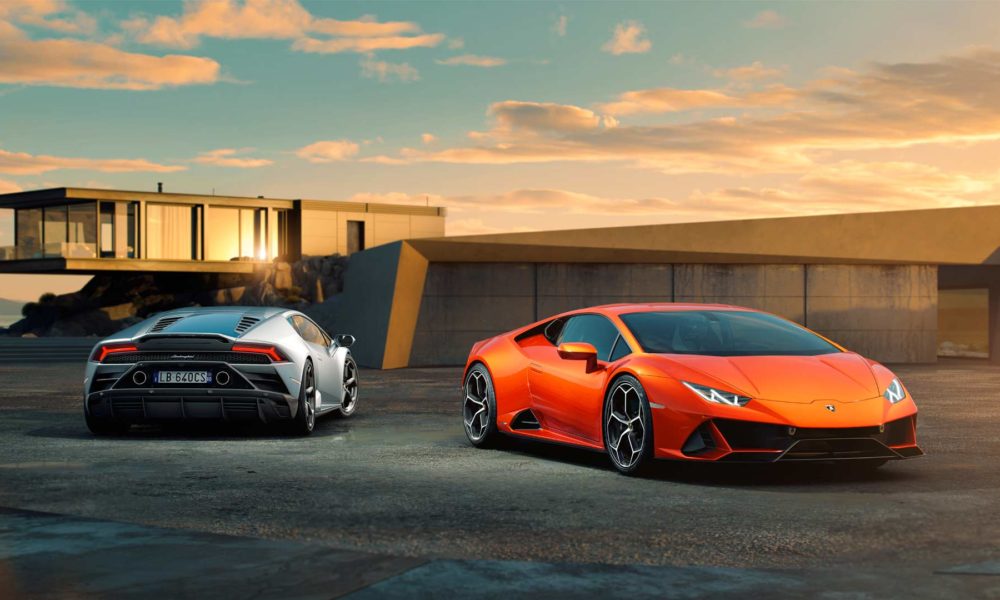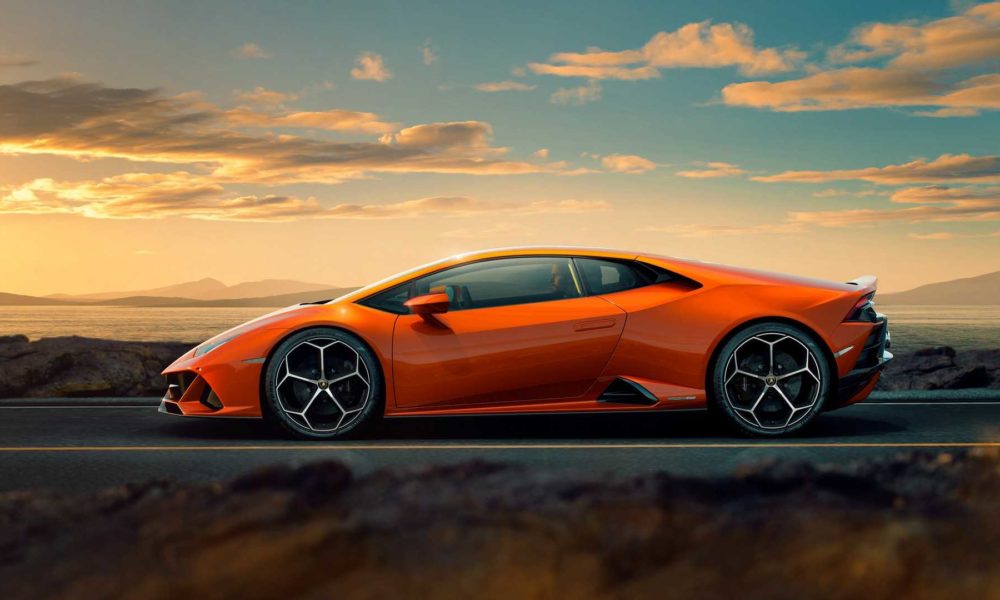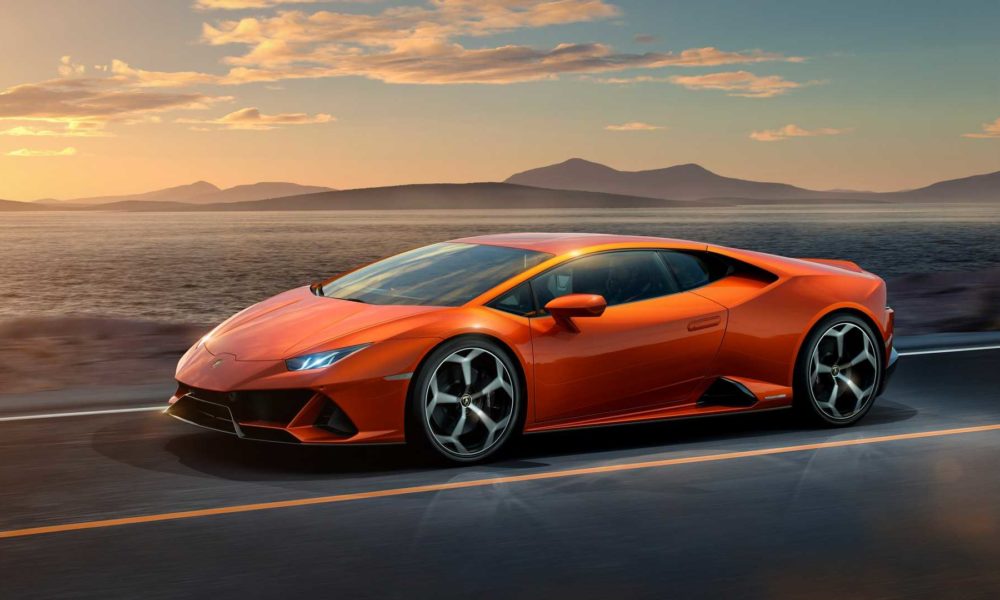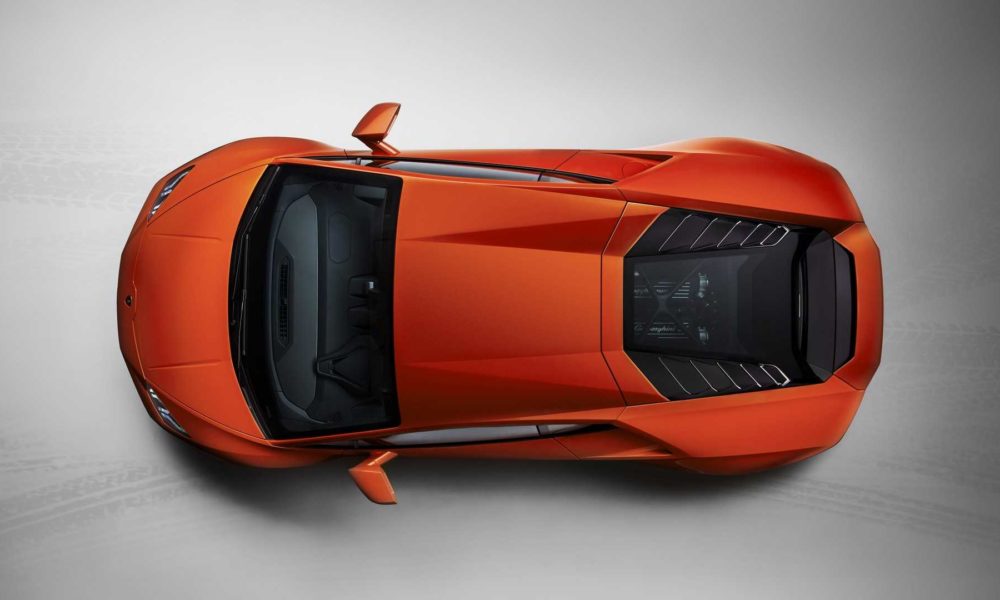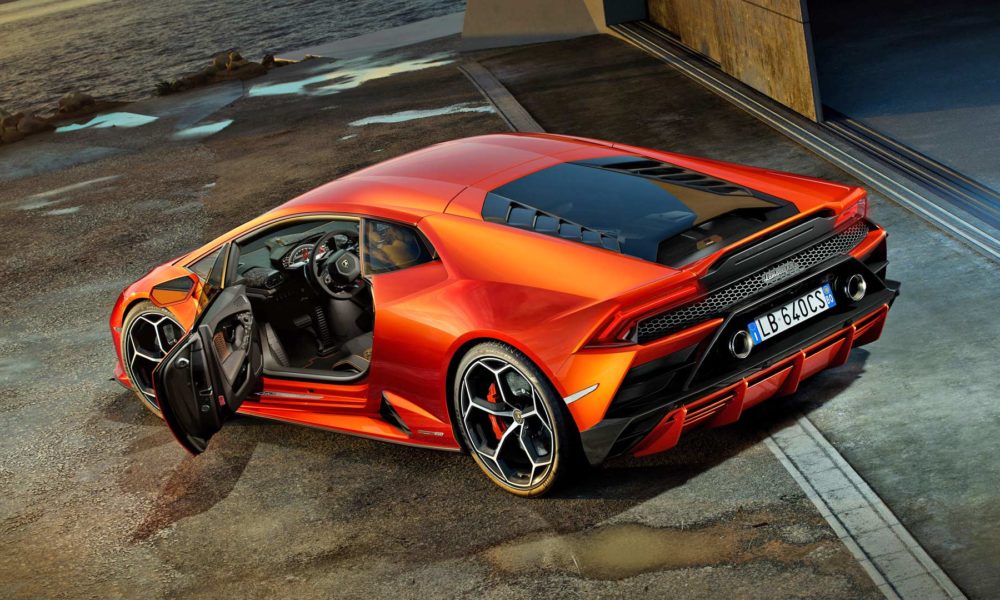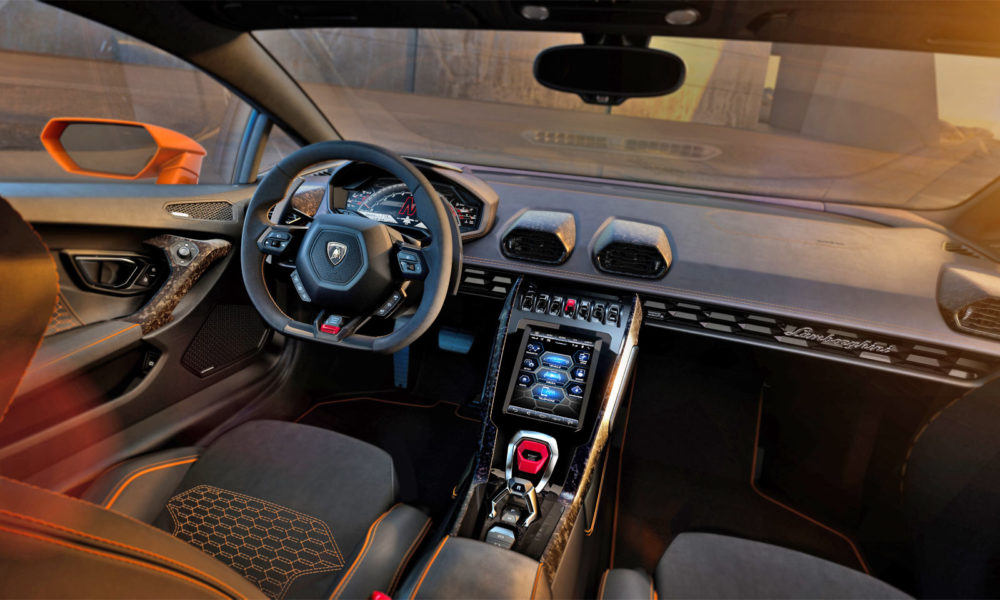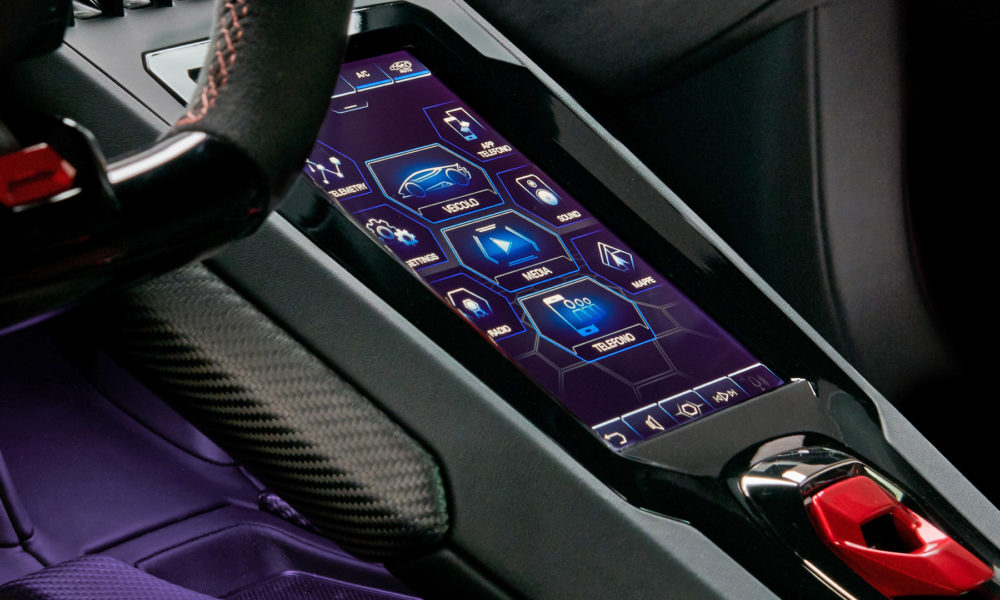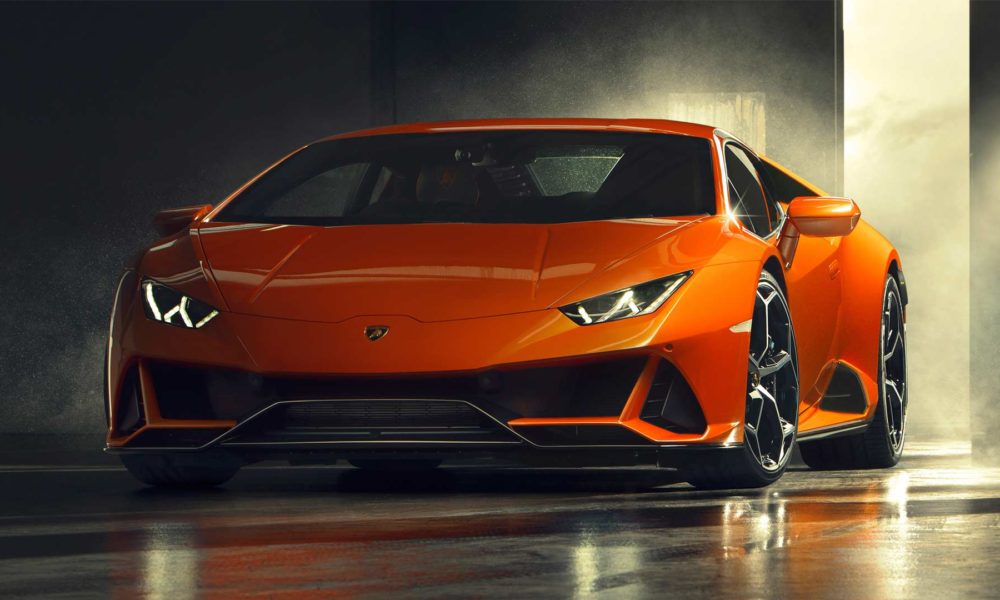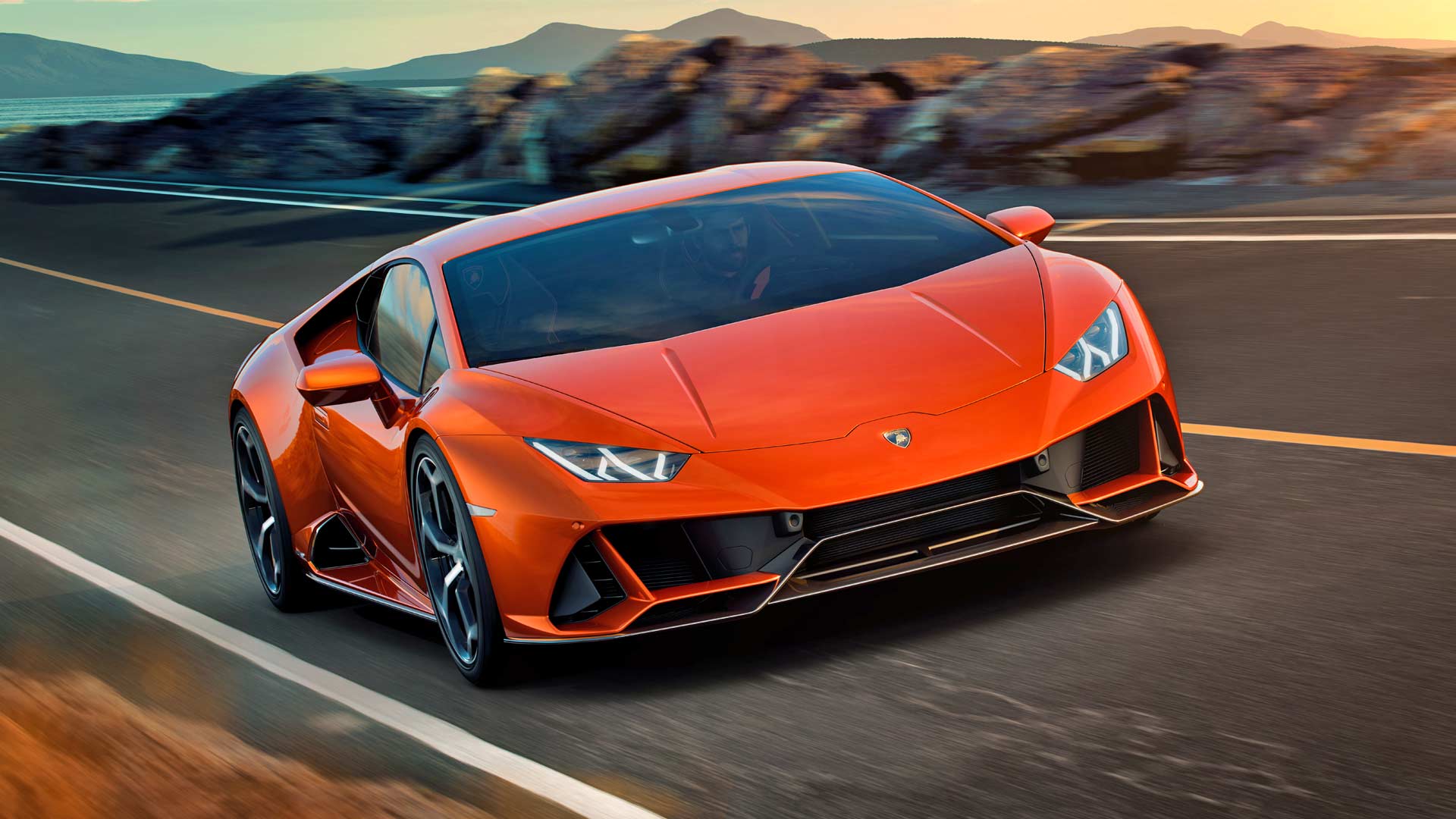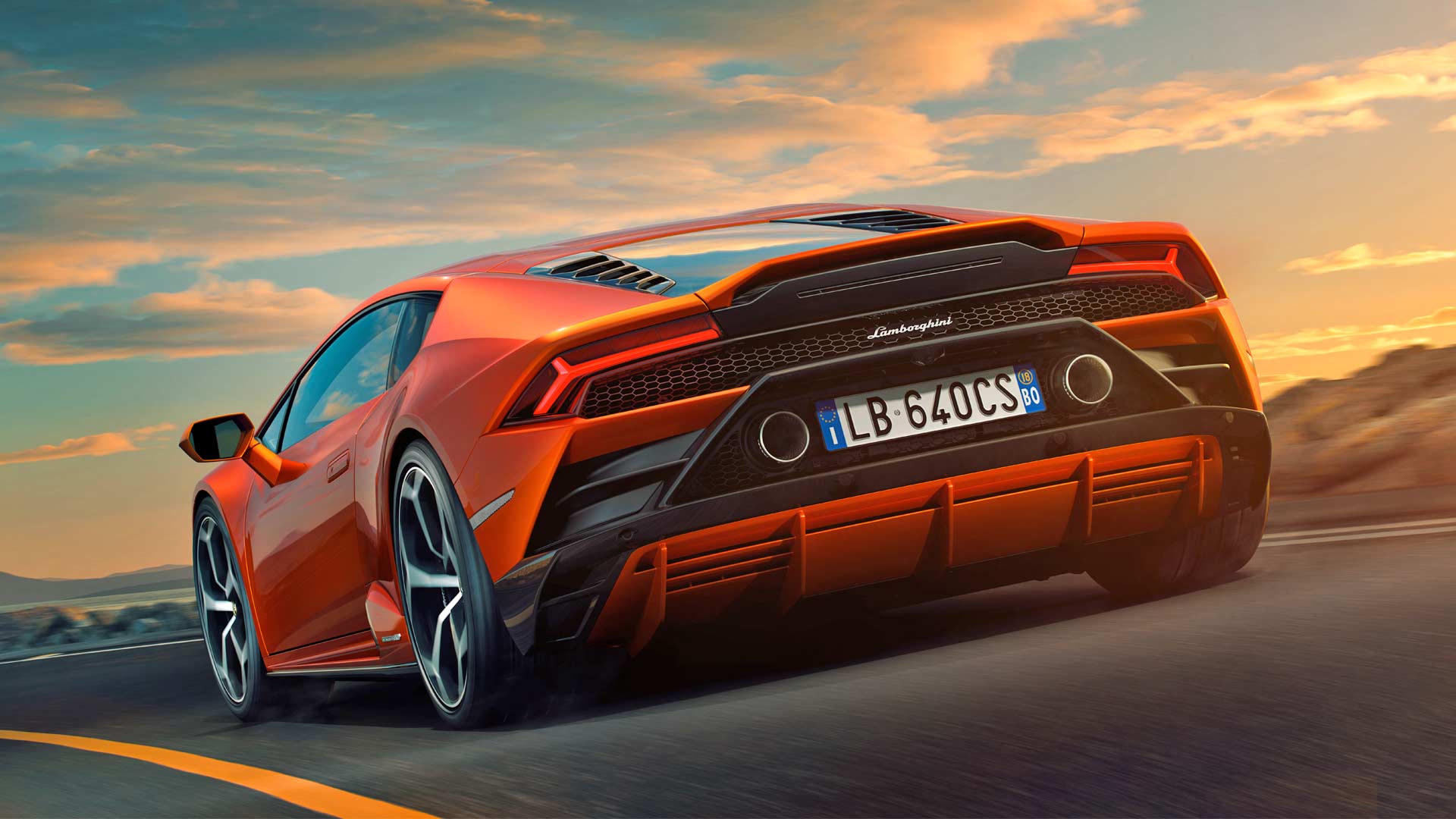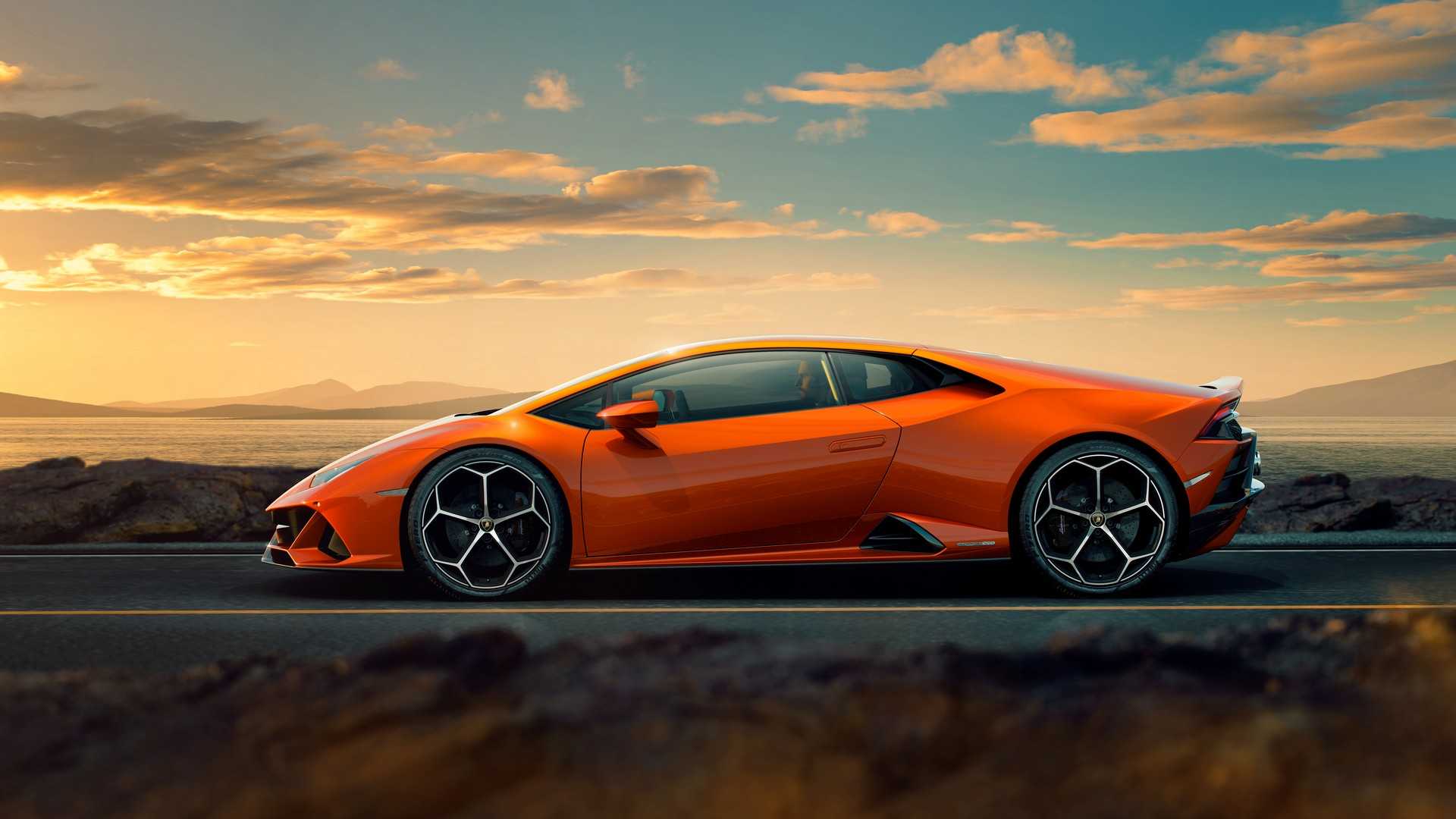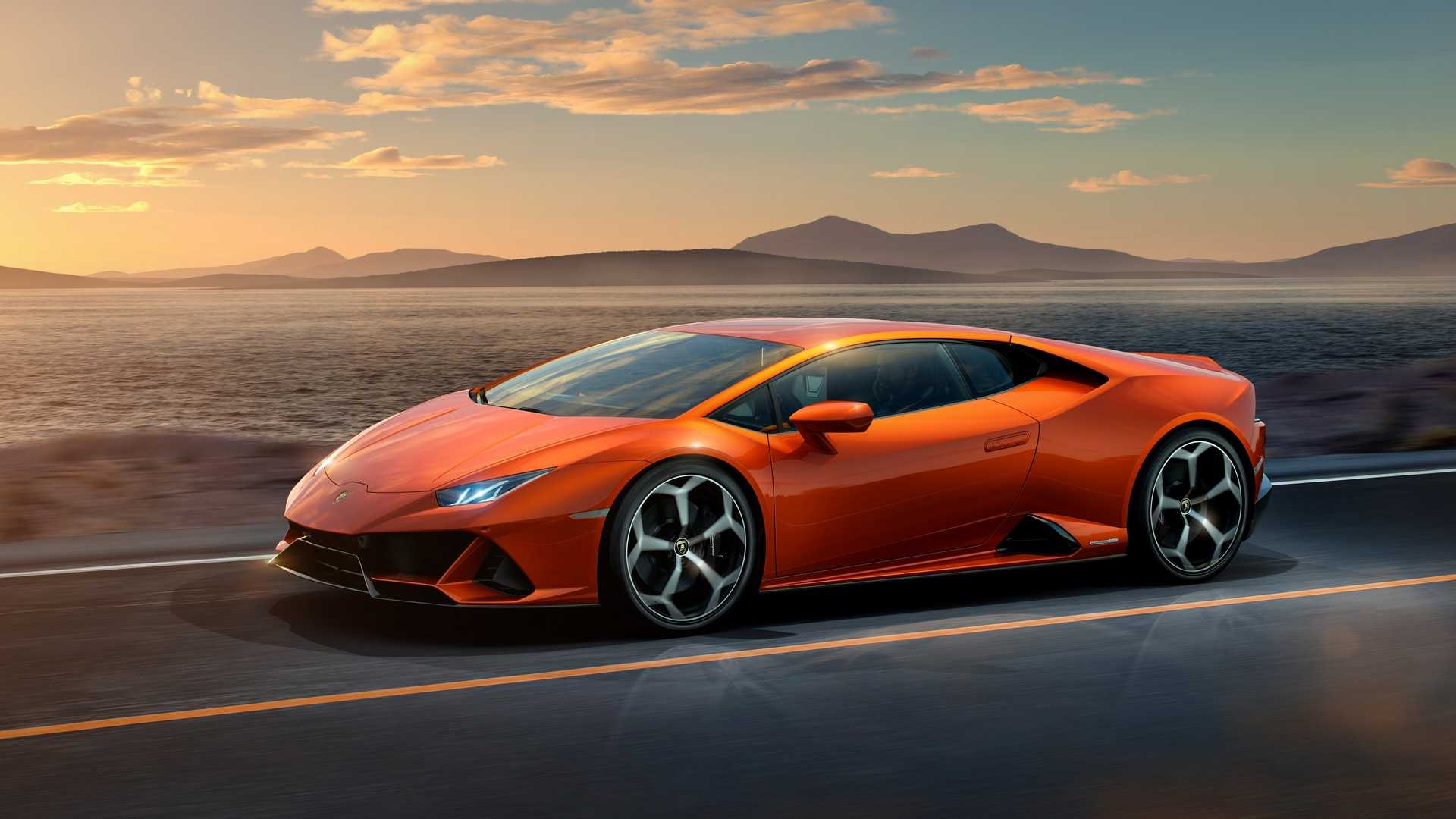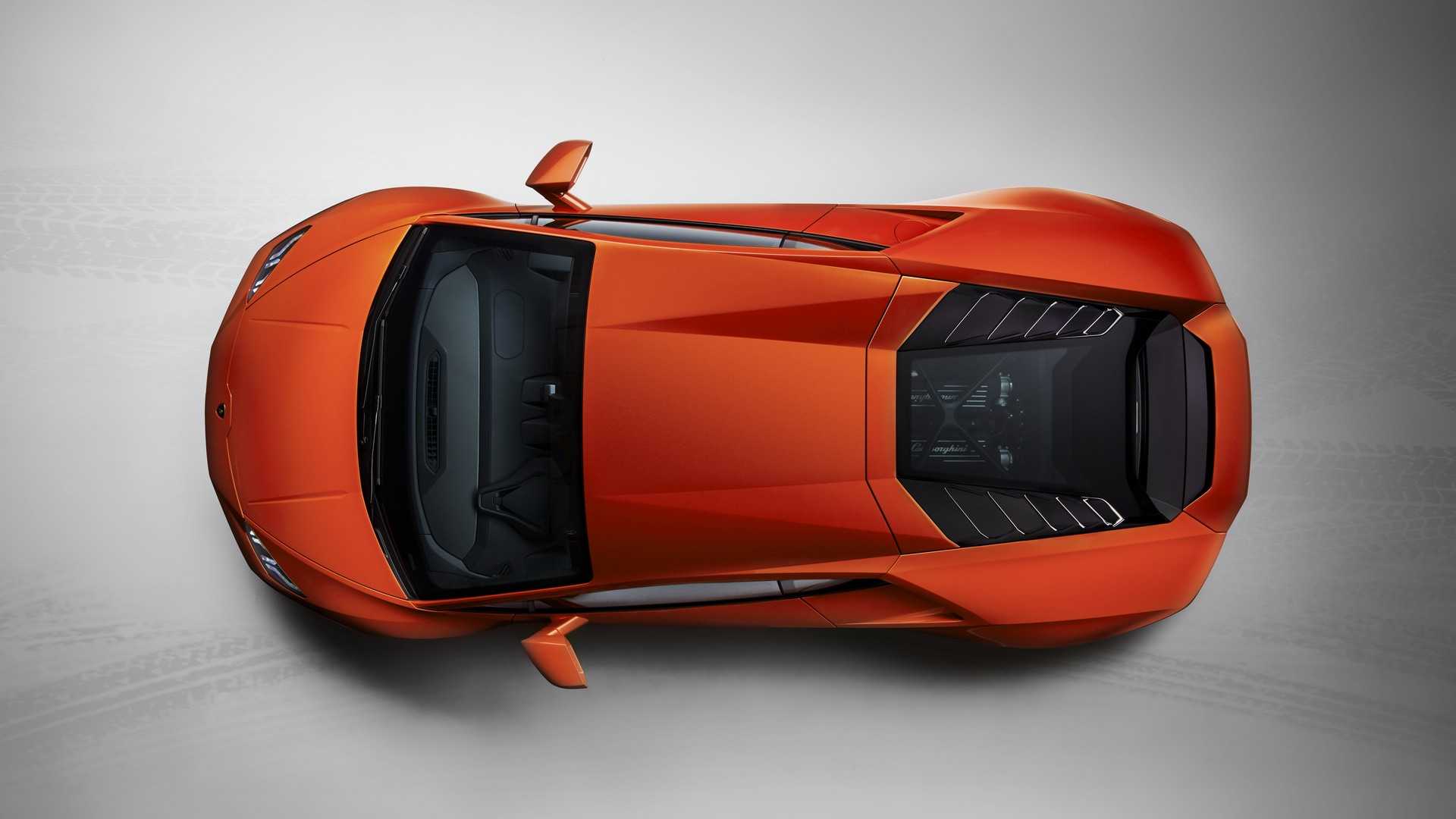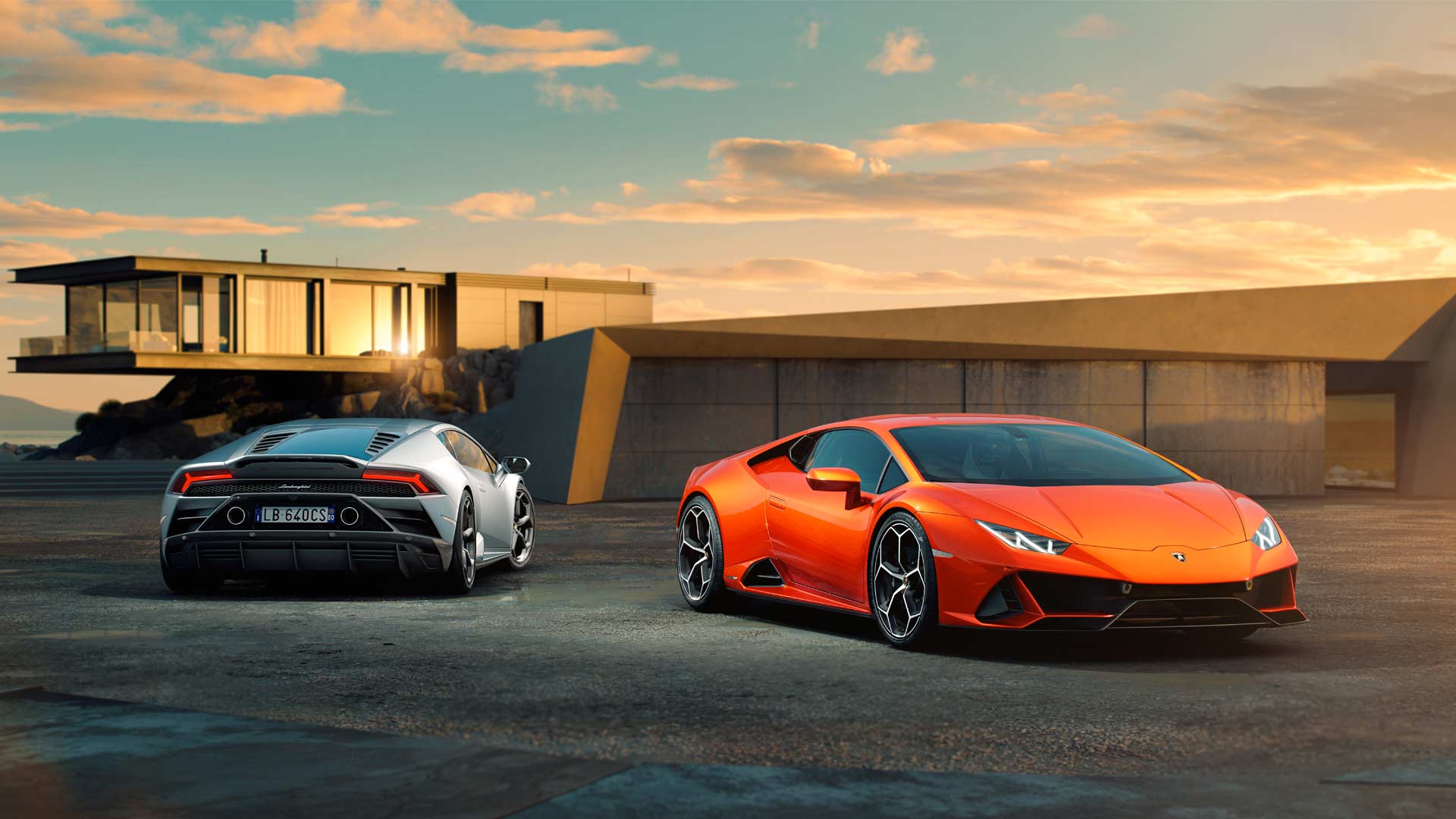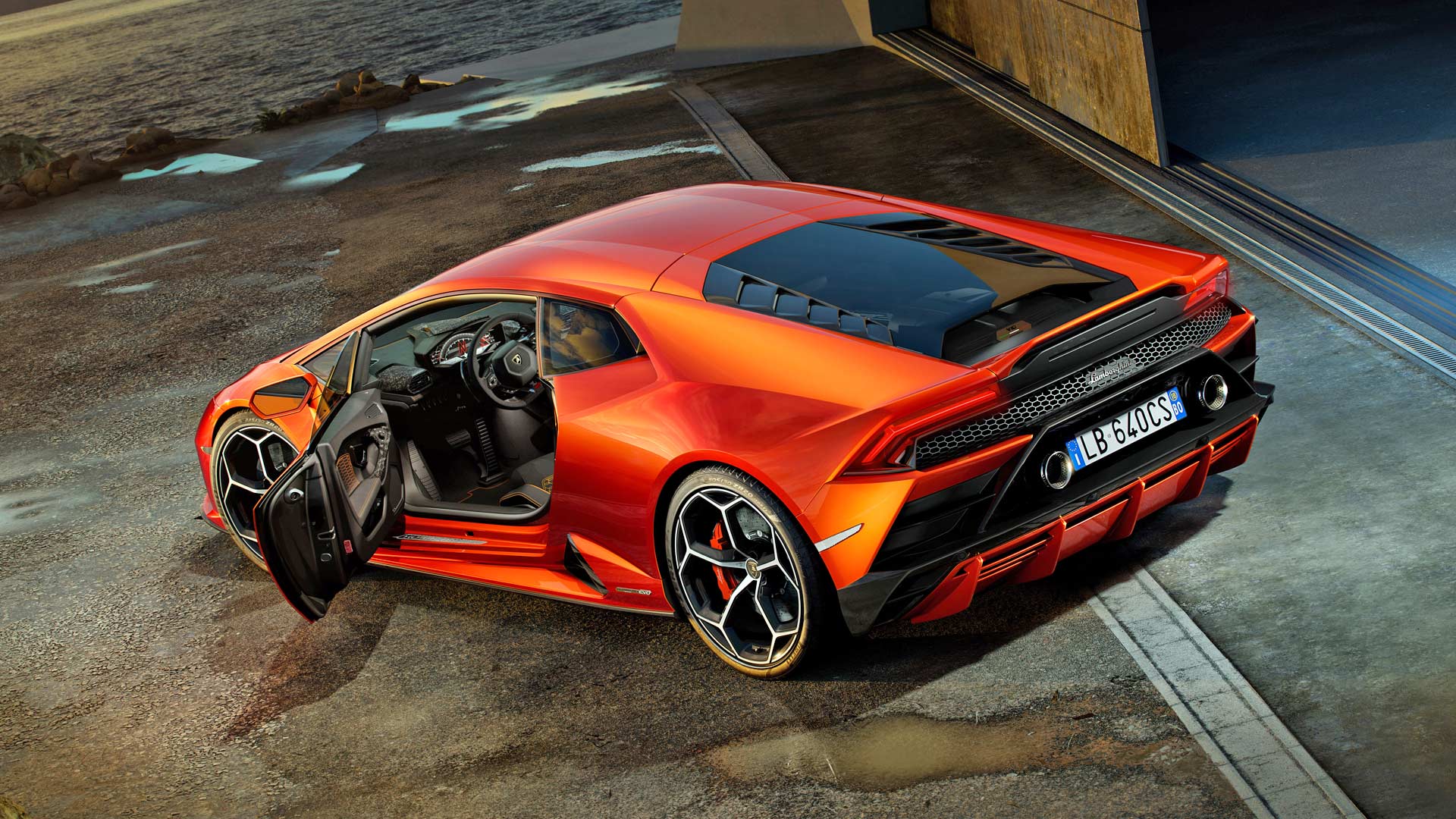Perhaps, the “Performante power” might not be an appropriate thing to say, because the Huracan Performante‘s real weapon is not really its engine’s output figures, but its active aerodynamics called ‘ALA’.
The new Huracan EVO doesn’t get that fancy system. However, it gets a more aggressive face and the same output figures. Speaking of which, the 5.2-litre naturally-aspirated V10 engine with titanium intake valves, develops 471 kW (640 hp) at 8,000 rpm with 600 Nm of torque delivered at 6,500 rpm.
The car weighs 1,422 kg dry (Performante Coupe – 1,382 kg), resulting in a power-to-weight ratio of 2.22 kg/hp. A 0-100 km/h acceleration happens in 2.9 seconds and the top speed is in excess of 325 km/h. Apparently, the braking from 100 km/h to 0 is achieved in just 31.9 m.
At the rear of the car is an integrated spoiler. Lamborghini says that the integrated aerodynamic styling of the EVO improves downforce and aerodynamic efficiency more than five times over the first generation Huracan.
This particular example is finished in Arancio Xanto – a new four-layer Lamborghini color. Rounding off the looks are 20-inch Aesir rims, exclusive to the EVO, shod with Pirelli P Zero tires.
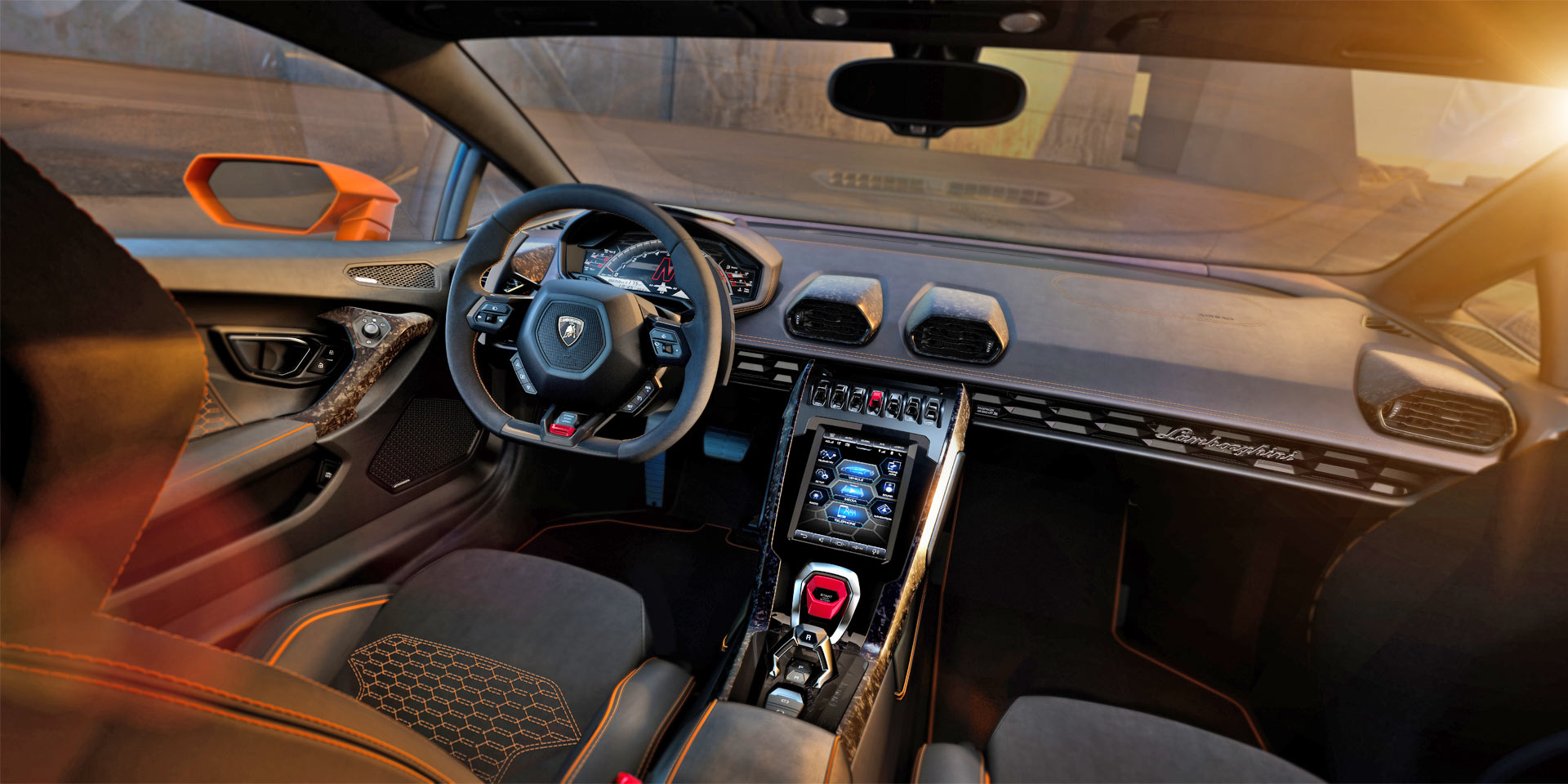
The vehicle also features rear-wheel steering and torque vectoring. The Lamborghini Piattaforma Inerziale (LPI) – a comprehensive set of accelerators and gyroscope sensors at the car’s center of gravity, has been enhanced to version 2.0. It monitors the lateral, longitudinal and vertical accelerations, as well as roll, pitch and yaw rate in real-time.
The magneto rheological suspension, upgraded to version 2.0, adapts the damping following inputs from the LPI. A new traction control system together with enhanced all-wheel drive and torque vectoring, allows traction to be directed to a single wheel if required.
The Lamborghini Dynamic Steering (LDS), can provide higher responsiveness in corners while requiring the lowest steering angles. All three systems are controlled by a Central Processing Unit called Lamborghini Dinamica Veicolo Integrata (LDVI).
Processing data in real time, the Huracan EVO according to Lamborghini, recognizes the driver’s intentions through the steering wheel, brake and accelerator pedal inputs, engaged gear and the driving modes selected via ANIMA controller.

You might have also noticed a new 8.4-inch capacitive touchscreen on the centre console. It features multi-finger gesture control, navigation and supports Apple CarPlay. An optional dual-camera telemetry system is also offered via the touchscreen, allowing advanced telemetry recording and analysis. An integrated high-capacity hard disk is also available.
As you might have guessed, the name ‘EVO’ comes from the track-only Super Trofeo EVO. Prices of the Huracan EVO starts at £165,256 in the UK and $261,274 in the United States. Deliveries commence in spring 2019.
The Huracan EVO was launched in India on Feb 7, 2019, priced at Rs 3.73 Crore ($524,000) ex-showroom.
Also Read: Lamborghini Huracan Performante Spyder drops top in Geneva

Leave a Reply
Note: Comments that are unrelated to the post above get automatically filtered into the trash bin.
